
Introduction
What are CBD gummies?
CBD gummies are edible candies that contain cannabidiol (CBD), a naturally occurring compound found in the cannabis plant. Unlike tetrahydrocannabinol (THC), the most prominent psychoactive compound in marijuana, CBD is non-psychoactive, meaning it doesn’t cause the “high” typically associated with cannabis.
These gummies offer a discreet and convenient way for individuals to consume CBD, often resembling regular gummy bears or other candy shapes. Available in various flavors, concentrations, and shapes, CBD gummies have become a preferred method of consumption for many because of their ease of dosing and palatable taste.
Popularity and rise in mainstream acceptance
Over the past few years, CBD has seen a surge in popularity due to its potential therapeutic properties. This rise in demand has led to a significant increase in the variety of CBD products available on the market, with CBD gummies standing out as one of the most sought-after options.
Several factors contribute to the growing popularity of CBD gummies:
- Convenience: They are easy to consume, require no preparation, and can be taken anywhere.
- Consistent Dosing: Each gummy typically has a predetermined amount of CBD, making dosing consistent and straightforward.
- Flavor: Unlike some other forms of CBD which may have a distinct, often earthy taste, gummies are flavored and mask any potential bitterness.
- Stigma Reduction: The familiar form of a gummy makes it less intimidating for first-time users and reduces the stigma sometimes associated with cannabis-related products.
In the mainstream arena, CBD gummies have garnered attention from both the general public and health professionals. Their non-psychoactive nature, combined with potential health benefits, has made them an attractive option for those seeking alternative wellness solutions.
-
 Hemp 30mg Gut Health Gummies$27.99
Hemp 30mg Gut Health Gummies$27.99 -
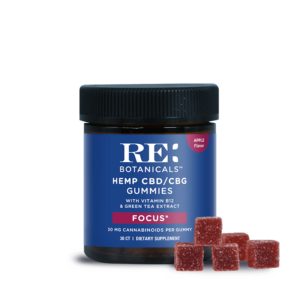 Hemp 30mg Focus Gummies$34.99
Hemp 30mg Focus Gummies$34.99 -
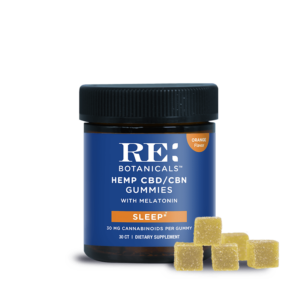 Hemp 30ct Seel Gummies$34.99
Hemp 30ct Seel Gummies$34.99 -
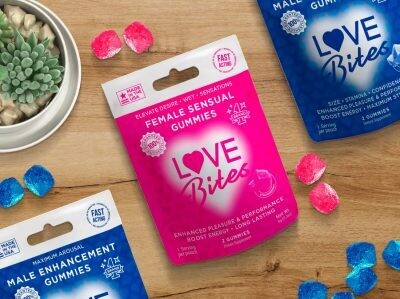 Performance Gummies$7.99
Performance Gummies$7.99 -
 CBD Vegan Gummies 250mg$9.99
CBD Vegan Gummies 250mg$9.99 -
 D9 Gummies 60mg$19.99
D9 Gummies 60mg$19.99 -
 CBN/HHC Gummies$19.99
CBN/HHC Gummies$19.99 -
 D9/CBD Gummies 120mg$19.99
D9/CBD Gummies 120mg$19.99 -
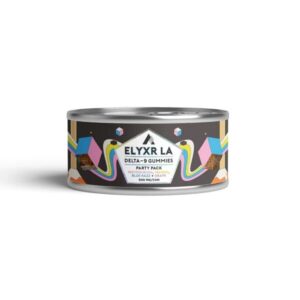 Elyxr D9 Gummies$33.99
Elyxr D9 Gummies$33.99 -
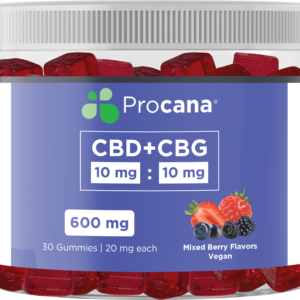 CBD/CBG 1:1 Gummies$46.99
CBD/CBG 1:1 Gummies$46.99 -
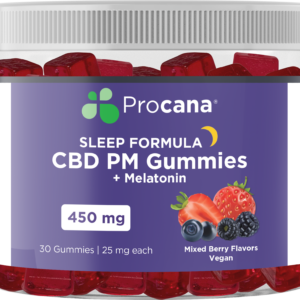 CBD PM Nighttime Gummies$35.99
CBD PM Nighttime Gummies$35.99 -
 CBG Gummies$42.99
CBG Gummies$42.99
History of CBD
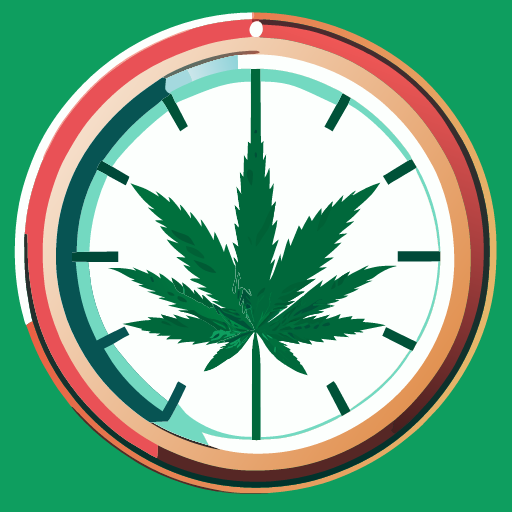
Brief history of CBD usage
Cannabidiol (CBD) is not a new discovery. In fact, it was first isolated in the early 20th century, but its therapeutic potential began to be recognized in the latter half of the century. The use of cannabis for its medicinal properties, however, can be traced back thousands of years, with ancient civilizations, from the Chinese to the Egyptians, using it to treat various ailments.
The modern history of CBD began in earnest in the 1960s when Israeli scientist Dr. Raphael Mechoulam successfully isolated and described the chemical structure of CBD. This groundbreaking work laid the foundation for future research into the potential therapeutic uses of CBD and its distinction from THC, the compound responsible for the psychoactive effects of marijuana.
The evolution from CBD oil to gummies
The first CBD products to hit the market were typically in oil form, administered using droppers or mixed into foods. While effective, the taste and method of administration were not appealing to all consumers. The need for more user-friendly products became evident.
Enter CBD gummies. In the 2010s, as the demand for palatable and easy-to-use CBD products grew, companies started infusing gummies with CBD. These edibles not only provided a more enjoyable way to consume CBD but also allowed for precise dosing and extended-release effects, thanks to the digestive process.
The adoption of CBD gummies was further fueled by their inconspicuous nature. Resembling everyday candies, they offered a discreet way to consume CBD, allowing users to maintain their privacy.
In a short span of time, CBD gummies have moved from being a novelty item to one of the most popular CBD products on the market. Their combination of convenience, taste, and efficacy have made them a go-to choice for both CBD novices and longtime users alike.
What is CBD?
The difference between CBD and THC
Cannabidiol (CBD) and tetrahydrocannabinol (THC) are the two most well-known compounds found in the cannabis plant. Both are cannabinoids, but they serve very different functions and have distinct effects on the human body.
- CBD (Cannabidiol): This is a non-psychoactive compound, meaning it doesn’t produce the “high” or euphoria commonly associated with cannabis. Many studies suggest that CBD has therapeutic properties which can potentially help with issues like pain, inflammation, anxiety, and seizures, among others.
- THC (Tetrahydrocannabinol): THC is the primary psychoactive component in the cannabis plant. When consumed, it can produce euphoric effects, altered perceptions, and a heightened sensory experience. While it has its own set of therapeutic benefits, such as pain relief and appetite stimulation, it’s also responsible for the intoxicating effects of marijuana.
Because of these differences, CBD products are often sought by those who want the potential benefits of cannabis without the psychoactive side effects.
The endocannabinoid system and how CBD interacts with it
The human body has a complex network known as the endocannabinoid system (ECS). This system plays a crucial role in regulating various physiological and cognitive processes, including mood, appetite, pain perception, and immune responses.
The ECS consists of endocannabinoids (which are endogenous lipid-based retrograde neurotransmitters), receptors, and enzymes. The two primary receptors in this system are CB1 and CB2. While THC directly binds to these receptors—specifically the CB1 receptors in the brain—CBD doesn’t bind directly. Instead, it influences the system indirectly, often by enhancing the body’s own endocannabinoids.
This indirect interaction is believed to be why CBD does not produce psychoactive effects like THC. Furthermore, CBD’s interaction with the ECS is linked to several potential therapeutic benefits, from anti-inflammatory effects to anxiety reduction.
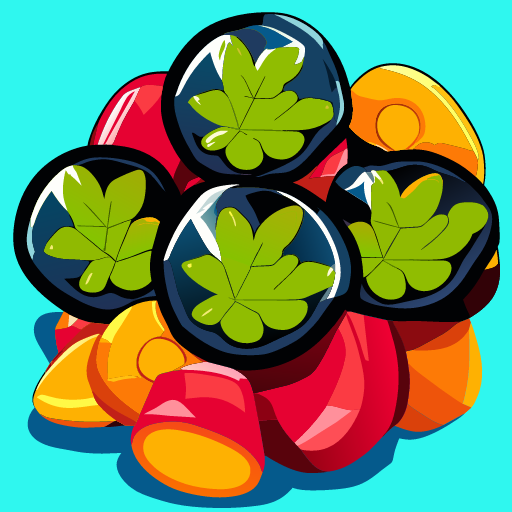
Benefits of CBD Gummies
Potential health benefits
CBD has become a focal point of interest for both researchers and consumers due to its potential therapeutic benefits. Though research is ongoing, preliminary findings and anecdotal reports suggest that CBD may offer the following health benefits:
- Anti-Inflammatory Properties: CBD has been shown in various studies to possess anti-inflammatory capabilities, which could aid in conditions like arthritis or inflammatory bowel diseases.
- Pain Management: Many people turn to CBD as an alternative to traditional pain relievers. It’s believed to interact with the body’s pain-regulating receptors, providing relief without the adverse side effects often associated with pharmaceutical drugs.
- Anxiety and Stress Relief: CBD has shown promise in reducing symptoms of various anxiety disorders. It’s thought to impact the serotonin receptors in the brain, which play a pivotal role in mood and anxiety regulation.
- Sleep Assistance: Difficulty sleeping? Some users find that CBD helps regulate their sleep patterns, making it easier to fall and stay asleep.
- Neuroprotective Properties: Early research suggests that CBD might be beneficial for neurodegenerative disorders, owing to its ability to act on the endocannabinoid system and other neural signaling systems.
Why gummies stand out
While CBD can be consumed in various forms, gummies offer several distinct advantages:
- Extended Release: As gummies are digested, CBD is slowly released into the system. This might provide longer-lasting effects compared to other methods.
- Taste and Palatability: Not everyone is a fan of the natural taste of CBD oil. Gummies come in a plethora of flavors, masking the hemp taste and offering a more enjoyable consumption experience.
- Precise Dosing: Each gummy usually contains a fixed amount of CBD, eliminating the guesswork and ensuring consistent doses.
- Digestive Benefits: There’s some evidence to suggest that when CBD passes through the digestive system, it may produce unique metabolites that aren’t present with other forms of consumption, potentially offering additional benefits.
It’s important to note that while many users report positive effects from CBD gummies, everyone’s experience may vary. As with any supplement or health product, it’s crucial to consult with a healthcare professional before starting a CBD regimen.
Why Choose Gummies Over Other CBD Products?
Ease of consumption
One of the primary reasons consumers gravitate towards CBD gummies is their simplicity. There’s no need for measuring doses with a dropper or making sure you’re taking the right number of capsules. You simply eat the gummy as you would any other candy.
Precise dosage
With CBD gummies, each piece typically contains a specific amount of CBD, be it 5mg, 10mg, 20mg, or more. This standardized dosing removes the guesswork and ensures you’re consuming the desired amount. This level of precision can be especially beneficial for those just starting their CBD journey or those adhering to a strict therapeutic regimen.
Discreet and portable
CBD gummies look like standard gummy candies. This resemblance allows users to consume their daily dose of CBD without drawing attention or answering unsolicited questions. Additionally, their compact size means you can easily slip a bottle in your bag or pocket, ensuring you have access to your CBD wherever you go.
Flavorful experience
Let’s face it: not everyone enjoys the taste of natural CBD oil, which can be earthy and somewhat bitter for some palates. Gummies come to the rescue with a variety of delicious flavors, from sweet fruity concoctions to sour tangs, ensuring a pleasant taste experience for everyone.
Long-lasting effects
Given that CBD gummies need to be digested, the release of CBD into the bloodstream can be more gradual compared to sublingual or inhalation methods. This slower release often translates to longer-lasting effects, which can be beneficial for those seeking prolonged relief.
Easy on the lungs
For those who are wary of vaping or smoking, gummies present a lung-friendly alternative. There’s no exposure to the potential harms of inhaling vapor or smoke, making it a safer choice for those with respiratory concerns.
Conclusion
While CBD gummies offer numerous advantages, it’s essential to recognize that they’re just one of many CBD product options available. Whether gummies are the right choice depends on individual preferences, desired effects, and specific needs. As always, when considering any CBD product, it’s advisable to do thorough research and consult with a healthcare professional.
This expanded section provides readers with a comprehensive understanding of why CBD gummies might be the preferred choice for many and how they compare to other CBD products.
How CBD Gummies are Made

Selection of Raw Materials
- CBD Extract: The foundational ingredient for CBD gummies is the CBD extract, which can be sourced from either hemp or marijuana plants. For legal reasons and to avoid psychoactive effects, most CBD gummies use CBD derived from industrial hemp plants, which contain less than 0.3% THC.
- Gelatin or Pectin: This ingredient gives the gummies their chewy texture. While gelatin is animal-derived, pectin is a plant-based alternative, making it suitable for vegans.
- Sweeteners and Flavorings: These can range from natural fruit juices and sugar to artificial flavorings and sweeteners, depending on the brand and product.
Extraction Process
Before the actual gummy-making process begins, the CBD must be extracted from the plant. The most popular extraction methods are:
- Carbon Dioxide (CO2) Extraction: Using pressurized carbon dioxide to pull CBD from the plant, this method is one of the cleanest and most efficient, ensuring high purity and potency.
- Ethanol Extraction: In this method, the plant is soaked in ethanol, which pulls the cannabinoids out. The ethanol is then evaporated, leaving behind the CBD oil.
Mixing and Infusion
- The base mixture for the gummies, often made from gelatin or pectin, is heated until it reaches a liquid state.
- Once liquid, the CBD extract is infused into the mixture. It’s vital to ensure even distribution so that each gummy contains a consistent amount of CBD.
- Flavorings, sweeteners, colorings, and other desired additives are mixed in to give the gummies their taste and appearance.
Molding and Setting
- The CBD-infused mixture is then poured into gummy molds. These can range from the traditional bear shape to worms, fruit shapes, or even unique custom designs.
- Once in the molds, the mixture is allowed to cool and set. This hardens the gummies and gives them their chewy consistency.
Quality Control and Testing
Before reaching the consumer, it’s crucial to ensure the gummies meet quality and safety standards:
- Lab Testing: Reputable brands will send their gummies to third-party labs to test for CBD content, ensuring that the product contains the amount stated on the label. These tests also screen for harmful substances like heavy metals, pesticides, and solvents.
- Packaging: Once approved, the gummies are packaged in airtight containers to preserve freshness and potency. The packaging will typically include information on CBD content, recommended dosage, and other product details.
Dosage and Consumption Recommendations
Understanding Dosage
CBD dosage isn’t a one-size-fits-all scenario. The ideal dosage can vary based on multiple factors. Here’s what to consider:
- Body Weight: Generally, individuals with higher body weight might require more CBD to experience its effects, and vice versa.
- Desired Effect: A smaller dose might be effective for mild relaxation or stress relief, while more profound symptoms like chronic pain may require a higher dose.
- Tolerance: Over time and with regular consumption, one may develop tolerance to CBD, necessitating a higher dosage for the same effects.
- Body Chemistry: Everyone’s body reacts differently to CBD. Factors like metabolism, endocannabinoid system function, and overall health can influence how much CBD one should take.
Starting Low and Going Slow
If you’re new to CBD gummies:
- Begin with a Lower Dose: Especially if you’re new to CBD, it’s recommended to start with a smaller dosage than what’s suggested on the packaging. This might be half or even a quarter of a gummy, depending on its strength.
- Monitor and Adjust: Keep track of how the dose affects you. If after a few days you don’t notice the desired effects, consider increasing your dose slightly.
- Consistent Consumption: For some, the benefits of CBD are more evident after consistent use over a period. Allow a few weeks to assess how different dosages affect you.
Reading the Label
Always read the product label to determine the CBD content of each gummy. For instance:
- If a bottle of CBD gummies contains 300mg of CBD and has 30 gummies, each gummy would contain 10mg of CBD.
- If you’re aiming to take 20mg of CBD daily, you’d consume two of these gummies.
Factors Affecting Absorption
The effects of CBD gummies can vary based on:
- Food Intake: Taking CBD gummies on an empty stomach may lead to faster absorption, but consuming them with food, especially fatty foods, can increase CBD’s bioavailability.
- Type of CBD: Gummies can contain CBD isolate (pure CBD), broad-spectrum CBD (includes other cannabinoids but no THC), or full-spectrum CBD (includes other cannabinoids and THC). Each type may affect users differently.
When to Consult a Professional
- Existing Medications: CBD can interact with certain medications. If you’re on any medication, especially those with a grapefruit warning, it’s essential to consult with a healthcare provider.
- Pregnancy and Breastfeeding: Pregnant and breastfeeding individuals should speak with a doctor before consuming CBD products.
Conclusion
While CBD gummies offer a convenient and enjoyable way to consume CBD, understanding the right dosage is crucial for optimal benefits. Always pay attention to your body, be patient, and consider seeking expert advice when uncertain.
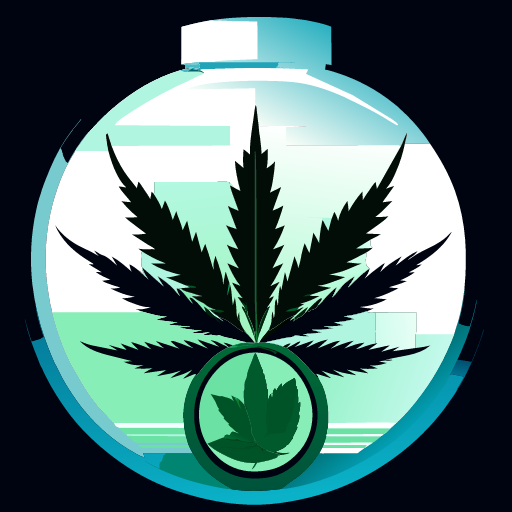
Potential Side Effects of CBD Gummies
While many people use CBD gummies without experiencing any negative side effects, it’s essential to be informed about the possibilities. Recognizing these side effects is vital for safe consumption and understanding how your body might react to CBD.
Common Side Effects
- Fatigue: One of the more reported side effects, some people might feel unusually tired or drowsy after consuming CBD. It’s crucial to avoid activities like driving if you’re experiencing this side effect until you know how CBD affects you.
- Diarrhea: Especially when taken in large doses, CBD can upset one’s stomach and result in diarrhea. Adjusting the dose or choosing a different consumption method might help mitigate this.
- Appetite Changes: While it varies from person to person, CBD can sometimes increase or decrease appetite.
- Weight Changes: Corresponding to the appetite changes, some people might notice a fluctuation in their weight after regular CBD consumption.
- Dry Mouth: This sensation, sometimes referred to as “cottonmouth,” is fairly common among cannabis-derived products, and CBD gummies are no exception.
- Decreased Blood Pressure: High doses of CBD might lead to a temporary drop in blood pressure, which could cause dizziness or a feeling of light-headedness.
Less Common Side Effects
While the aforementioned side effects are more common, some individuals might experience:
- Mood Changes: Including feelings of anxiety or depression.
- Dizziness: Beyond the potential drop in blood pressure, some people might feel dizzy after consuming CBD.
- Nausea: Especially when taken on an empty stomach, CBD might cause some users to feel nauseous.
Considerations for Consumption
- Purity and Quality: Ensure that you’re purchasing CBD gummies from reputable suppliers that provide third-party lab testing results. This ensures that the product doesn’t contain harmful contaminants and has the stated amount of CBD.
- Interactions with Medications: CBD can interfere with certain drugs, notably those with a “grapefruit warning.” It’s essential to consult a healthcare professional if you’re on medications before starting CBD.
- Individual Reactions: Remember that everyone’s body is different. Just because one person experiences a particular side effect doesn’t mean everyone will. Always start with a low dose and monitor your body’s reactions.
Conclusion
Being informed about the potential side effects of CBD gummies allows users to make educated decisions about their consumption. While CBD is generally considered safe, understanding possible reactions and being observant of any changes in your body is key to a positive CBD experience.
Legal Considerations of CBD Gummies
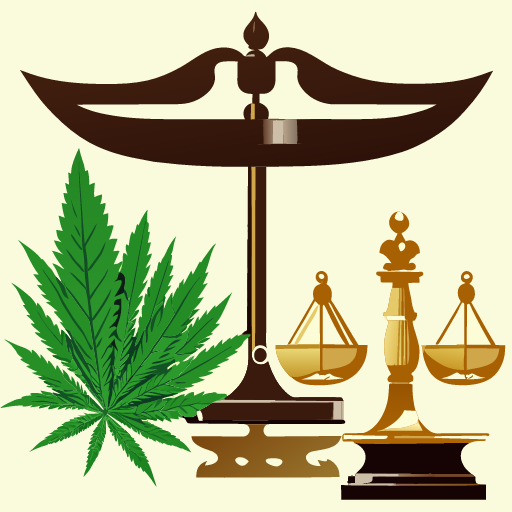
As the popularity of CBD products, including gummies, has surged, the legal landscape governing its production, sale, and consumption has been in flux. Here’s what you should consider:
Source of CBD
- Hemp vs. Marijuana: The source of the CBD is pivotal in determining its legality. In many jurisdictions, CBD derived from hemp (cannabis plants with less than 0.3% THC) is legal. In contrast, CBD from marijuana plants (those with higher THC content) might not be.
- 2018 Farm Bill: In the United States, the 2018 Farm Bill federally legalized the cultivation and sale of hemp and its extracts, provided THC content remains under 0.3%. However, each state can set its own policies, which might be more restrictive.
State Laws and Regulations
- Varied State Laws: In the U.S., while hemp-derived CBD is federally legal, state laws regarding CBD vary significantly. Some states have embraced CBD in all its forms, while others impose restrictions on its sale or consumption.
- Consumable CBD: Some states distinguish between CBD products used topically versus those ingested. CBD gummies, being consumable, might face stricter regulations in certain areas.
International Considerations
- Variation by Country: If traveling internationally, it’s crucial to research and understand the laws governing CBD in the destination country. While some countries have welcomed CBD, others have strict prohibitions.
- Import and Export: Importing or exporting CBD products, including gummies, can be complex due to differing international laws. Always verify regulations before attempting to transport CBD across borders.
Labeling and THC Content
- Accurate Labeling: Even in areas where CBD is legal, products must typically be labeled correctly, specifying CBD and THC content, among other details.
- Risk of Elevated THC: It’s worth noting that not all products are created equal. Some CBD gummies might inadvertently contain higher THC levels than advertised, potentially leading to legal issues or intoxication.
Medical vs. Recreational
- Medical Use: In some regions, CBD is only legal for medical use, requiring a prescription or approval from a physician.
- Recreational Use: Other jurisdictions might allow CBD gummies for recreational use, regardless of medical necessity.
Conclusion
Navigating the legal maze of CBD can be challenging given its evolving nature. It’s essential for consumers and sellers alike to stay informed about current regulations in their specific location. When in doubt, consulting legal counsel or local law enforcement can help provide clarity.

Conclusion
CBD gummies, with their convenient and palatable form, have unmistakably paved their way into the wellness mainstream. Their potential benefits, ranging from pain relief to improved sleep, make them an attractive option for many. However, as with any supplement or wellness product, it’s imperative to approach with an informed mindset. From understanding how they’re made to gauging the right dosage and navigating the complex legal landscape, knowledge empowers users to make the best decisions for their health and well-being. As the world of CBD continues to evolve, staying updated on the latest research and regulations ensures that users can enjoy the potential benefits of CBD gummies while ensuring safety and compliance. Whether you’re a seasoned CBD enthusiast or a curious newcomer, may your journey with CBD gummies be both beneficial and enlightening.